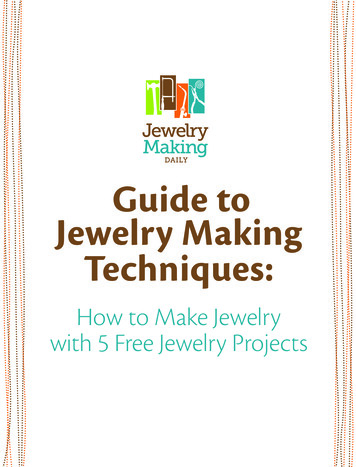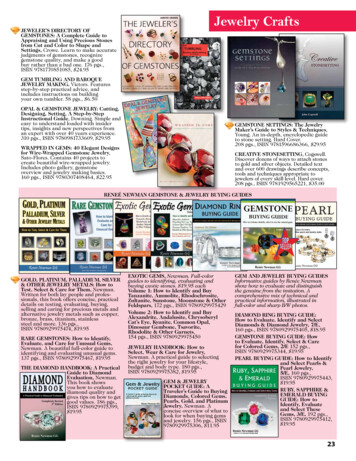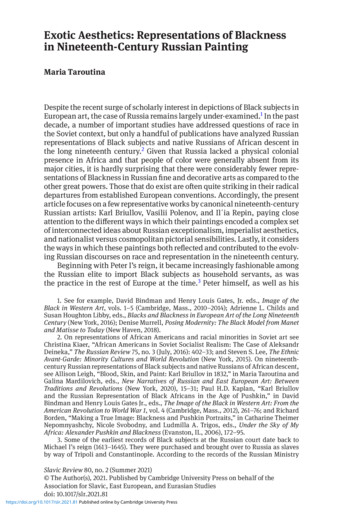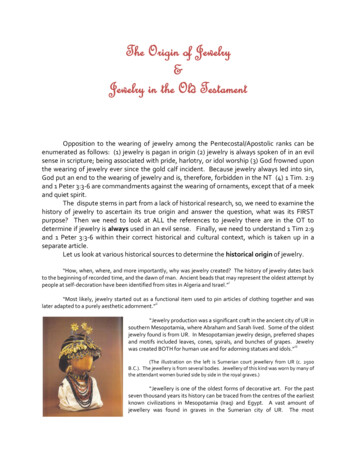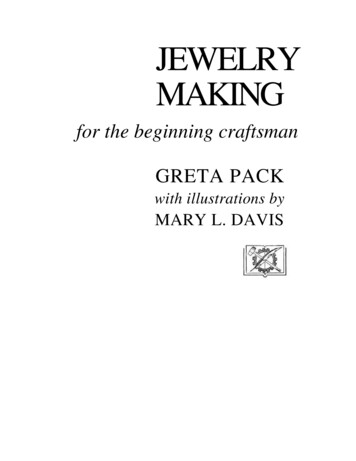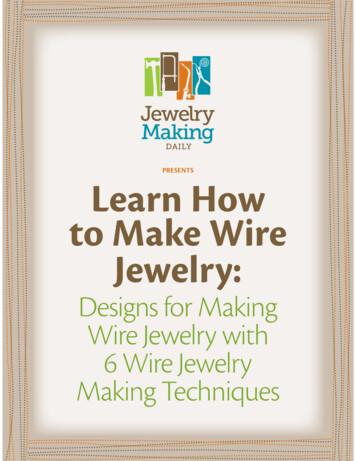
Transcription
ravine;p5tSaSo-QO Eia000Re:aeHaeari4ParactanetByot::“ieMe Eee La BLEPp5eraGaPeponiesaL OnthenrENoraRpmae:coeatreaNicaeare9.8iatestayOn HDakhs 9Hipelen*PoiCra aeORsrireasLiede cre:NGyAp ;aepFgd:weaoDRaystera aierzeS Fse aee ��yiiy‘matibsbay ;4 iaesLehreriaDz ‘‘Sanh aera74z5anea Dey tae4i;cpaLNpre esees ayFito:‘ie4Birrrotate;7rei.itespayPaert reaG:.Serle)dySptaoeaa5Oanaa::hanHUE aTehBS4erureeaeaeRyeit hepoe NepartF7;iSena)tren:y3ray”edOFaertenle‘'enast RORYAr ChayeeLPaSee PytlaeesipferenaPUTSairesApa a aeieyPU“etaT orp ys"PRSpCPrasCeaPoLeratceaPESTiatA"
1Zz:35-E ac; ”2:zBZ5 a2 :ae ARIESaeisWe » 22WShi G NVINOSHLIWSWVg LILSNISsasiluvddlINSTITUTIONS3luVvudia LIBRARIESSMITHSONIANn3 c: g2 SMITHSONIAN INSTITUTIONca aore6 ILNLILSNINVINOSI“4 iz 9G 5i fyi2Et) WN277NWS 82 HGSeees.5pot ewes T LIBRARIES cSeSN a D: —NOILALILSNIa3 xINSTITUTIONane WxNOILALILSNIINSTITUTION22EaSIN 22 SSa4 oe 5SjzZzSMITHSONIANLIBRARIESS\weING: mm\rySMITHSE ce x i eafodoO—me I— oe —oe;2J yy24LIBRARI ES SMITHSONIAN INSTITUTION NOILALILSNI NVINOSIS3IuUVYUdITNVINOSHLINSOoza0D o5-oa a wzz24Sz 2E SZzS.x2 NVINOSHLINS&ZAEe SaIuVUdITzA GeNSO)wnSANSreeatOaneoOat ESRE5 SAY ZzzSeaySMITHSONIANaeni aeLIBRARIusWS.f2 ma)n imnoZz 4iFe ZzE22:x.a E«SXaZz a gn. fo)UNOS ASIE SMITHS!Se) luvud Mtl BRARI ESQS ae aES) SMITHSONIAN T INSTITUTION S3JIYVYd!IT2S SXotZzLIBRARIES SMITHSEsow NVINOSI5z ,3 2g 5Kuy,* Ye; f GaSemSenmsmay weaco? NVINOSHLIWSSMITHSONIAN2Fy e5 ULNVINOSHLINSSMITHSONIAN.oS3INVYaIT LIBRARIESbtNVINOSHLIWSMITHSONIANwz E5Si2E E:2oewty, 2 Y 2SINSTITUTIONo 5E40i] aKean o DOLASSMITHSONIAN INSTITUTIONsee -2 OSHLIWS SMITHSONIANS3IUVUGIT LIBRARIES SMITHS
sSyu)aoOScce —oSB m:oLIBRARIESE aSYWwfeoO TUTIONeBez E2. GY fh Sout2aZzaa4 rey « mhaos5 cNe 2 OeLIBRARIESwaeesNS"oe)c-zaf cecS—Oo !zorZ !ea Ee syareeiE SS, x“Freeay z oaZzE no aWwwzo«2 x24 a52-KeaPy re 2 2“”z22 7-w Sj2 zoOGL .z “”eyeeeoe zKsWZ Sie2MEoO MS a ao elcs»eeHsINSTITUTIONeewn Zz 2NK LoSewFs)2&oa a zelenaFeRea”E 5zSMITHSONIAN INSTITUTION opo2 z3GS31yvyuait Sin "5 NOILALILSNI Z NVINOSHLINS a S3IYVYEIT z LIBRARIES a SMITHSONIANmnweYS 2z oetd }SMITHSONIAN INSTITUTION NOILMLILSNI NVINOSHLINS S31YVYEIT S cSszS TUTION,aoah SS 4: 2 ge. "raece& NOILNLILSNI NVINOSHLINSSNiuy ooezauwSMITHSONIAN INSTITUTIONFraNOILALILSNI NVINOSHLINS z:ozaLIBRARIES Zz LIBRARIES a Ww)a& “no6a/Yait Gry FbZezUTIONWadNOILNLILSNIz” —z z.o zicUTION-Oo2ZSSK wveeSr VYGIT LIBRARIES SMITHSONIAN INSTITUTION NOLLOLILSNI NVINOSHLIWS S31uveaiTgAae,eec 4 coz Zzo fe -SEB S31YVYdIT -LIBRARIES SMITHSONIAN INSTITUTIONLIBRARIESWWY4gttgsZzc4WAX NS:oO ]z oO by, a pif wo SMITHSONIAN INSTITUTION Sieoyo2 o2&n*mfe2a )NOILMLILSNI NVINOSHLINS S31uVvua 11 wy,Zz. MeNVINOSHLIWSguwaeeSUy 2&B2 GEE ReoO WLOW FZ:5a wy: eoOaeaeNOILNLILSNIoO2 o —aiem2S x& NX FEWwSNOILNLILSNI NVINOSHLINSEEe4EZz *S TUTION4wa E g Z,Wy:UY.byca2 LIBRARIES a SMITHSONIAN 2 INSTITUTIONNOILNLILSNISMITHSONIAN NOILNLILSNILIBRARIESSMITHSONIANLIBRARIESLIBRARIES NOILNLILSNILIBRARIES SMITHSONIAN INSTITUTION NOILOLILSNI NVINOSHLINSS3IYVUEIT 1LIVaud!SM
NINETEENTH CENTURYay
NONEeerGEN TuURYJewelryFROMTHEFIRST EMPIREei COO PEPORWhaleARTSTO THEREN@)FIRST WORLDWARNgeeSECMOF IDEACOR AMIOIN
ACKNOWLEDGMENTIn assembling material for the exhibition, the Museum has receivedmost helpful suggestions and information from the following, towhom are given most grateful thanks:Miss CHRISTINE ALEXANDERJOHN O. GREENMELVIN GUTMANHarotp HusertusMiss EMMELINE SEWELLI. SNYDERMANWILLIAMG. SyRINGThe design on the cover is after a drawing by Felice Giant,No. 349 in the CatalogueCopyright 1955 by the Cooper Union Museum for the Arts of Decoration
INTRODUCTIONIn THE DECORATIVE ARTS the nineteenth century offers a greater varietyof designs and styles than any other, and one of the most varied fields in thisvarious era is jewelry. Before the French Revolution jewelry had beenalmost exclusively the prerogative of the very rich; pieces were, in consequence, quite rare. But by the death of Queen Victoria quantities of jewelryin the most and least precious of metals abounded, and no woman was so pooras not to own a ring or a brooch. While economic and political factors mayin part explain this abundance they cannot explain the variety. ‘Though thecentury was eclectic and repetitive, it will be treated here chronologicallyrather than stylistically. ‘This method is selected for convenience, as thedivision into political periods seems a less arbitrary one than that of fashionsor styles.Most of the precious jewelry of the century no longer exists: intrinsicvalue and changes in fashion have destroyed it. The pieces that do remain,even if not always the most costly, are not less interesting for being lessvaluable. These, designed to be worn during the day or on occasions lessthan grand, were usually more sensitive to changes in fashion than costlyjewels.In addition to the pieces themselves some literary references do exist, butthese are of less help in realizing the past than paintings and prints whichshow jewelry being worn. And more important than paintings and printsare designs and drawings for actual jewels. The most elaborate preliminarysteps were taken for the most precious pieces of jewelry; hence the largestnumber of remaining drawings are for just those jewels which are now mostscarce. Drawings from the hand of the jeweler or from his workshop are asexpressive of his manner and treatment of an object as the jewel itself.Alternate schemes and variations of effect may be shown (Nos. 341, 355). TheCooper Union Museum is particularly fortunate in possessing over eighthundred designs and working drawings for jewelry; many from the nineteenth century are here exhibited (Nos. 341 to 404).In rare instances both the pieces and its design still exist (Nos. 139, 395Fig. 5). Occasionally pieces were made from designs of earlier centuries(No. 234), or old pieces were accurately reproduced if their period happenedto be currently fashionable (Nos. 53; 128, Fig. 10; 133; 140, Fig. 8; 274).France was the most important single country for the production ofjewelry throughout the century. Though ideas may have originated inItaly or England, France was quick to make them fashionable, so the century is here treated according to the political periods of France. In this3
country, custom and practice have preserved, even into the present century,the distinction between orfévrerie, or goldsmiths’ work, which in earliercenturies included jewelry; bijouterie, which is exclusively the making ofjewelry; and joaillerie, or the setting of precious stones.At the end of the eighteenth century jewelry made and worn in Francewas of simple design and often of base metals (Nos. 2, 3, 7). The Revolutionhad abolished the legal status of the corporation of goldsmiths, a ‘‘masterpiece” was no longer required of an apprentice; indeed apprenticeship wasnot compulsory and anyone who wished could enter the field. There was nolonger any definition of standards of craftsmanship nor any legal standardfor purity of materials.Models, schools and collections weredispersed.Adivision of labor was practiced: pieces were no longer designed and executedby the same man or even his workshop. Now it was common, where earlierit had been rare, for one craftsman to work from the design of another andthe finished piece to be sold by a third. This practice was to increasethroughout the century and at the end large establishments comprisingdesigners, craftsmen and vendors were the exception. The political andeconomic reasons for a change of style at the beginning of the century areobvious enough. For a time steel buckles were more fashionable thansilver.But even before the Revolution jewelry, and all decorative art, wasbecoming more severe in pattern.During the Directory (1795-1799)andConsulate(1799-1804)largeamounts of jewelry, none very precious, were worn: earrings, necklaces,long sautoiy chains about the waist and shoulders, bracelets at the shoulder,elbow and wrist and many rings. Gentlemen, besides wearing rings andseals as fobs (a fashion that remained popular until the middle of the century), also wore chatelaines, usually finely made of steel with gold or porcelaindecoration (Nos. 7, 8). Though it became more popular later in Berlin,cast iron jewelry was made in 1789 in France. The new government madeand hoped to exchange this for the more precious jewelry of patriotic citizens and to use the gold for reducing the national debt. In 1813 thousandsof pieces of cast iron jewelry of considerable quality were made in Prussiato be given to those who donated their jewelry for the purchase of ammunition to fight Napoleon. Cast iron jewelry continued to be made in the1820’s and 1830's in the gothick style.At the beginning of the nineteenth century neo-classic restraint had longsince replaced rococo grace, but it was not until the First Empire (18041814) that archaeology dominated design. More than any previous centurythe nineteenth was in a position to exploit the past through this science.Greek and Roman intaglios and cameos were worn on the head, arms, bodyand even4the toes; reproductions,often fine, wereplentiful for those not
fortunate to possess old pieces (No. 6). Napoleon revived the pomp ofImperial Rome; like most parvenus, he emphasized a ceremony that requiredthe ladies of his court to wear many jewels. Regardless of the demands ofcourt ceremony the Empress enjoyed jewels, as may be seen in many of herportraits.These and other paintings of ladies of the First Empire in their jewelsillustrate two features:the prominenceof the tiara, andthe ubiquity ofthe parure, or matched set of jewels. The tiara had not been fashionablefor centuries; in the eighteenth century in court dress an aigrette or sprayof jewels, sometimes holding feathers or flowers, was considered a sufficientornament for the hair. Under the Empire a jewelled tiara (No. 352), oftenwith a comb as well, was indispensable in court dress for ladies. It was asthoughthe newruling class, uncertainof its authority,wishedits rankemphasized in the jewels of its ladies. Frequent return to fashion throughout the nineteenth century has removed much of their symbolic effect,though even today when the number of courts at which tiaras may be wornis notably smaller, they are considered customary for court dress.Emphasis on a parure of jewels was also characteristic of the Empire.Ensembles of tiara, comb, earrings, necklace, brooch and bracelets, all ofthe same motif (No. 351), were not an innovation of the period; but thelarger part of all important jewelry of the period was made up in such sets.Parures of diamonds, emeralds and diamonds, rubies and diamonds, sapphires and diamonds, opals and diamonds, and cameos were made, at con-siderable expense, for the Empress Josephine. ‘These remained with her atthe time of her separation; and new and even more costly parures weremade for the Empress Marie-Louise. The parure offered the maximumamount of display and expenditure, for in the more important only preciousstones, usually set with diamonds or cameos, were used, though the EmpressMarie-Louise had parures of opals and one of cut steel. The fashion ofthe parure established under the Empire remained, though it never regainedits dominance in court dress. Later examples were usually less costly andelaborate.The Empire represents the first developed style in jewelry of the nineteenthcentury.Its aimwasbrillianceandopulence;aneffectof con-spicuous consumption. The more costly pieces were well made and thehigh standards of craftsmanship lost at the end of the eighteenth centuryhad been regained.With the return of the Bourbons (1814-1830) display of wealth and jewelryfell out of fashion. Louis XVIII was not fond of ceremony and the courtdid not provide a sympathetic background for rich jewels, nor did many ofthe returned emigrés have the means to provide themselves with such, did5
they wish to. Politics and economics cannot entirely explain changes instyle, and this period with its great variety was one of the most experimentalof the century.As if in reaction to the massive splendor of the Empire, jewelry was madein lighter form. Nostalgia was felt for eras long antedating the Revolution.The Middle Ages and the “gothick”’ style became fashionable. —The MiddleAges were peopled with the ancestors of the aristocracy of the recentlyrestored regime; the displaced ruling class of the Empire could find noassociations here. The fifteenth-century fashion of the ferronniére wasrevived. This jewel, named after Leonardo’s portrait of the blacksmith’sbeautiful wife, was a fine chain with a central motif worn low on the brow(Nos. 46, 63). After the 1840’s it ceased to be fashionable. The sixteenthcentury was revived in a “Marie Stuart” costume ball given in 1829 by theDuchesse de Berri, daughter-in-law of Charles X.This historical snobbery gave an additional sentimental value to jewelryof small intrinsic worth.Now topaz, amethyst, aquamarine, garnet and othersemi-precious stones as well as cameo-cut shell were used in parures oflight-weight gold often stamped (No. 26), sometimes finely wrought in smallgranules or filigree work (No. 30). Cut steel now became more popularand less expensive.‘The serpent, a motif used in jewelry at least since the RomanEmpire,became quite popular and remained so throughout the century. The decorative flexibility with which its shape could be adapted to bracelets, necklaces, combs, brooches, and earrings (No. 366, Fig. 4) seems to have quiteovercome any unpleasant associations ladies might have recalled.‘The jewelry of the Restoration bears its own nostalgic charm; the intellectual and archaeological character of Empire jewelry as well as itsrichness were modified and replaced by a sentimental and literary appeal.But in the work of one man the archaeological aspects of jewelry becamemore important than ever before.Having opened a shop in Romein 1814,Fortunato Pio Castellani (1793-1865) began making reproductions of Greekand Etruscan jewelry in the 1820's. The quality of the granular and filigreework of these pieces had not been seen since antiquity. Their accuracy asreproductions,achievedby workerswhomCastellanihad discoveredstillusing ancient techniques, gained for him an international reputation. Thesepieces were made in two weights of gold, as was ancient jewelry; a lightweight in imitation of funerary jewelry (No. 53), and a heavier weightreproducing that made for wear (Nos. 55, 57). Except for an interruption in1848-1858, the work was carried on after Fortunato Pio’s death in 1851 byhis son Augusto (1829-1914). His reproductions of the jewelry of classicalantiquity (No. 59) and northern medieval pieces (No. 71, Fig. 1) were made6
throughout the century in such a similarity of style and technique that withfew exceptions they are difficult to date. Besides making jewelry the Castellani formed a large collection of antique examples; Augusto later becameDirector of the Capitoline Museum and much of his collection remains there.His elder brother Alessandro (1824-1883) also collected and dealt in antiquejewelry. He travelled extensively and displayed the work of the firm, whichwas admired and imitated widely, at most of the exhibitions of art andindustry which were held all over Europe and America after 1851. Muchof the antique jewelry now in the British Museum was acquired throughAlessandro Castellani. Many of these pieces while in his collection hadserved as models for the firm (No. 128, Fig. 10).Society of the period of Louis Philippe (1830-1848) held no aristocraticpretensions. The newly established bourgeoisie had been frugal for solong that they were unable to change their habits when they became theruling class. The result was “un certain luxe, réel, mais économique.”Such a society did not offer a large market for precious jewelry. Butjewelry continued to be made of cheaper materials in increasingly largequantities. Enamel furnished color (Nos. 47, 48) and stamped work gradually replaced the delicate granular and filigree work of the 1820's and early1830’s. The quality is inferior to that of earlier work although there arecertain outstanding exceptions. Inexpensive alloys, such as pinchbeck, hadbeen known since the late eighteenth century; these now readily lent themselves to the popular die-stamped jewelry of the late 1830's and 1840's (Nos.85 to 89). Lack of intrinsic value has preserved this type so that the periodis well represented.In the1830’s seed pearls, oftenmadeinto parures,became quite fashionable (No. 80). The small pearls give somewhat theeffect of the earlier gold granular work in larger scale. Jewelry made of hair,usually human,waspopularfromthe 1840’s until the late 1850’s.MissFlower notes that young ladies often made it themselves lest an unscrupulous tradesman substitute a stranger’s hair for that given to him to work(Nos. 100, 101). This is perhaps the most striking type of what has beencalled the “jewelry of sentiment.”An outstanding example of jewelry of sentiment, but of precious materials,is a pair of bracelets made about1840 for Queen Louise d’OrléansBelgium, with the names of her children, Léopold and Charlotte,ofone oneach. The clasp of each of these conceals a crystal-faced locket which mighthave held a portrait, or lock of hair or sometoken of the child.The finequality and conservative design of these bracelets is to be expected of aroyal piece of this time (No. 66, Fig. 7).Since the 1840’s tourists returning from Italy have bedecked their personsand their progeny with Neapolitan jewelry of colored glass mosaic depicting7
Pompeian themes and Roman ruins (Nos. 72, 103), or coral cut and polisheduntil it resembles little petrified bouquets (No. 150), or cameos cut fromthe lava cast forth by some visited volcano (No. 240). Further north pietradura, a mosaic work of naturally colored stones usually in designs offlowers and insects, catered to the same clientele (Nos. 106, 116). The vary-ing quality of this work had no effect on its unvarying attraction, and it continued to be made throughout the century with little change of style.The romanticism begun in an earlier period now became dominant. In1844 Eugene Julienne published ornamental designs for almost everyobject, including jewelry, in every style beginning with that of the thirteenthcentury. Frangois-Désiré Froment-Meurice (1802-1855) had a large workshop producing jewelry in the medieval style, but debased imitations of hispieces, often not without an appeal of their own, were morepopular, andcheaper, than his rather pedantic, but beautifully finished jewels (No. 64).In England also, jewelry reflected the Gothic Revival. Among the manydesigns of Augustus North Welby Pugin (1812-1852) may be found somefor jewelry, but these are incidental in his work.The most influential pro-ductions in jewelry of this kind besides those of Froment-Meurice were doneby the German Wagner and the Dane Rudolphi, both working in Paris.Forms used in jewelry became thicker, coarser and heavier in appearance, though often the pieces were quite light in weight. The jewelry of the1840’s disappoints by its pretentions to a solidity it does not possess.The First Empire borrowed grandeur from Imperial Rome; the SecondEmpire (1852-1870) drew with equal freedom on Egypt, Greece, Etruria,Rome, the sixteenth, seventeenth and eighteenth centuries of Italy, Franceand England, and the Near and Far East. During this period quantities ofjewels in the greatest variety of styles and range of quality were made. Inits diversity of styles the Second Empire epitomizes the century.Once again French society was dominated by an aristocracy of relativelyrecent origins. Ihe Emperor had many of the crown jewels reset in 1853for his bride Eugénie, Countess of Montijo, who throughout her reign,unlike the preceding Queen Marie-Amélie, patronized many jewelers. Themost immediate result of this new interest was the production of richer,brighter jewelry which used precious stones more profusely than that of theprevious decade. This new brilliance was especially striking when contrasted not only with the preceding reign but with the short-lived SecondRepublic and the disturbed years after 1848.At that time Louis Tiffany, who had opened a stationery and fancy goodsshop in New York in 1837, went to France. By judicious and extensivepurchases of jewelry he was able to set up the firm, Tiffany and Company,in 1851.8
In the same year French jewelers sent examples of their work to theGreat Exhibition held in London. England as well as France was prosperous,and some jewelers practiced in both countries. English jewelry is usuallybetter made than that of France and its technical innovations were oftenimitated by the French. But fashions in jewelry, in the style of the piecesthemselves and how they were to be worn, were usually established inFrance and followed by the rest of Europe and America.Earlier in the century styles had some base in politics, archaeology, orsentiment. Now they were revived apparently for no other reason thannovelty, and fashions changed rapidly, every few years. The medievalstyle (No. 390) shared popularity with the rococo of Louis XV (No. 115),which was soon outmoded by the style of Louis XVI, to which, for nopossible historical reason, the Empress became attached. Her apartmentsat the Tuileries were decorated in this style and one of her jewelers, Baugrand, designed in this style for her (Nos. 398, 399, Fig. 6). The sixteenthcentury was also fashionable. In 1876 a facsimile edition of the jewelrydesigns of René Boyvin (fl. 1560-1580) was published, and the designs ofHans Collaert (fl. 1580) were realized in gold and precious stones (No. 234).Rapid changes of fashion, perhaps artificially induced, were probablymore like the changes of style during the first half of the twentieth centurythan any previous period. In the 1860's costume jewelry first reached apopularity never subsequently lost. This jewelry was an economic necessity.Precious jewelry had become so massive and heavy and stones so large(No. 396) that the amount of gold and gem-stones alone made it the prerogative of the very rich. Yet the demand for jewelry was great: costume jewelry,often madeof base metaland imitationstones, wasnotintendedto lastlonger than the fashion of a dress. Galvanization had now made possiblecheap electrically cast reproductions. In the 1850’s aluminum was isolatedand though it first was more precious than gold it soon became quite cheapand was used for a short time in jewelry (No. 121). Actual insects and evenbirds were set as jewelry (Nos. 164, 165).More sober jewelry was still widely produced. By this time the Castellanihad many imitators; among the most successful were Eugéne Fontenay(1823-1885) of Paris, whose works are adaptations of the antique rather thanrecreations of it (Nos. 185, 186), and Robert Phillips (d. 1881) of London.Giacinto Melillo (1846-1915) of Naples was perhaps the foremost of theCastellani’s pupils. His copies of Roman jewelry are no less accurate thanthe Etruscan and Greek pieces of the Castellani, and they show an elegancewhich is characteristic of the last years of the nineteenth century (Nos.274 to 276, 300 to 307).Carlo Giuliano, the outstanding jeweler of the second half of the century,9
now appeared at London in the late 1860’s. His earliest work is typical ofits period and distinguished from other jewelry only by a certain refinementand superior execution (No. 178). ‘Though he worked in the Greek andEtruscan styles (No. 147), he also developed a manner quite distinct fromthat of the Castellani, and created jewelry unlike any made before.Giuliano’s knowledge of antique and Renaissance jewels is often apparentin these pieces, but they are not essays in archaeological reconstruction.While the Castellani applied their superb craftsmanship and unerring tasteto reproductions which expressed alike the style of their time and the valuesof archaeological scholarship, Giuliano’s pieces are more imaginative andcertainly no less finely made. His attitude toward the past is that of anartist rather than a scholar. His later jewels, made in the light elegantforms typical of the last years of the century, are quite distinctive and expressunderstanding and sympathy with jewelry of Egypt (No. 205), the sixteenthcentury (Nos. 262, 321), the Orient (No. 247), and Art Nouveau (No. 292).But his work does not reflect transiently fashionable aspects; in all thesepieces it is the stature of his own personality as an artist-jeweler which ismost apparent. His elegance transcends the Edwardian.At the end of the 1860’s a jeweler in Paris began to perfect a way ofsetting stones that was to result in the nearly complete elimination of goldsmith work in precious jewelry and with few exceptions reduce the jewelerto a stone setter. Oscar Massin revived and popularized the eighteenthcentury manner of mounting jewels on springs; more importantly, hedeveloped invisible mountings which emphasize, indeed show nothing elsebut, the stones. This technique coincides with a renewed popularity ofthose stones which show to best advantage in such a mounting: diamonds.‘Two reasons may be given for the popularity of diamonds at this time. Someof the vast resources of the South African diamond mines had reached theParis market by the early 1870’s. A decade later electricity was introducedfor illumination in public places. In 1875 the Opéra at Paris opened anda few years later, in 1883, the Metropolitan Opera House was first occupied.Across these vast interior spaces and under the glare of white electric lightjewelry of colored stones, gold and enamel appeared both more garish andless striking than the delicate sparkle of diamonds in invisible mountings.Perhaps this unfavorable comparison helped the reaction which did comeagainst the heavy jewelry of the 1860's. Beginning in the later 1870’s anduntil after the end of the century jewelry became lighter in form, moreopen in design and depended more on the scintillation of diamonds forbrilliance. Along with this desire for brilliance and absence of color, jetbecame fashionable. It was worn perhaps for the first time without funerealconnotations (Nos. 225, 226).10
The end of the Second Empire marked no great stylistic change injewelry. The period was so varied as to defy easy generalization. Englishwealth sustained the inevitable changes of fashion, and if the center offashion did not move to London, what was thought to be the Englishtaste was promoted in Paris, especially sporting jewelry, popular in the1880's and 1890's.No economic reason can account for the reaction against the elaboratejewelry of the 1860’s and early 1870's; the diamond jewelry that succeededit was often more expensive. From the 1880’s until the First World WarEngland and France enjoyed considerable prosperity. Precious jewelry,with diamonds by far the most popular stones, was made in increasinglylighter designs. An entirely different kind of jewelry appeared in the1890’s, a result of aesthetic doctrines formed by the Pre-Raphaelites,elaborated by William Morris and others and realized by the Art Workers’Guild (1884) and the Arts and Crafts Exhibition Society (1886). ‘The MiddleAges were foraged, though not archaeologically, nor were their forms recreated for any sentimental reasons.‘This was a doctrinaire revival, the formsof certain past ages were used because each was thought most suitable forthe particular function of the piece. A moral snobbery valued the irregularity of the handcrafted piece above the high finish associated with machinemade objects. Glitter was vulgar. Unpolished metals were used, stonesen cabochon were preferred to faceted ones. ‘This new concept of jewelry,adopted abroad and refined by Gallic elegance, was soon fashionable. Theexceptionalpieces of René-JulesLalique(1860-1945)(Nos.308to311,Fig. 13) and the designs of Eugeéne-Samuel Grasset (1841-1917) (Nos. 400 to403, Fig. 12) represent mature examples of l’Art Nouveau; while those ofHector Guimard (1867-1942) seem to justify the special designation of a“Style Guimard” (Nos. 312 to 314).This is a truly international style and a most flexible one. Based on almostno forms found in any styles of the past, it allows the greatest latitude forthe personality of the artist. The firm of Fabergé in Saint Petersburgmastered it perfectly (No. 324), while at the same time working in the moreconventional style of 1900 (No. 322), as well as making archaeological reproductions of twelfth-century pieces (No. 326).Perhaps the work of Louis Comfort Tiffany (1848-1933) is most typicalof l’Art Nouveau in America. In his and similar pieces the metal appearsalmost kneaded, so evident is the hand-wrought quality; encrustations ofpatina proclaim the surface unviolated by any hint of polish. Nothing ispermitted to remove the effects of time, real or apparent; the cabochon-cutstones are chosen for their color and size, never for their value or perfection(Nos. 338, 339). Each piece is so doctrinaire in its design and execution,11
so self-consciously aesthetic, that it demands appreciation rather than givespleasure. It is paradoxical that this jewelry, designed with such a strivingfor timelessness, should now appear so dated.The contemporary work of Giuliano seems, in comparison, almost without epoch. It is, of course, no less a product of its age — indeed it is less of arevolt against its age — than l’Art Nouveau pieces; but its major interest isan aesthetic one, no
centuries included jewelry; bijouterie, which is exclusively the making of jewelry; and joaillerie, or the setting of precious stones. At the end of the eighteenth century jewelry made and worn in France was of simple design and often of base metals (Nos. 2, 3, 7). The Revolution



